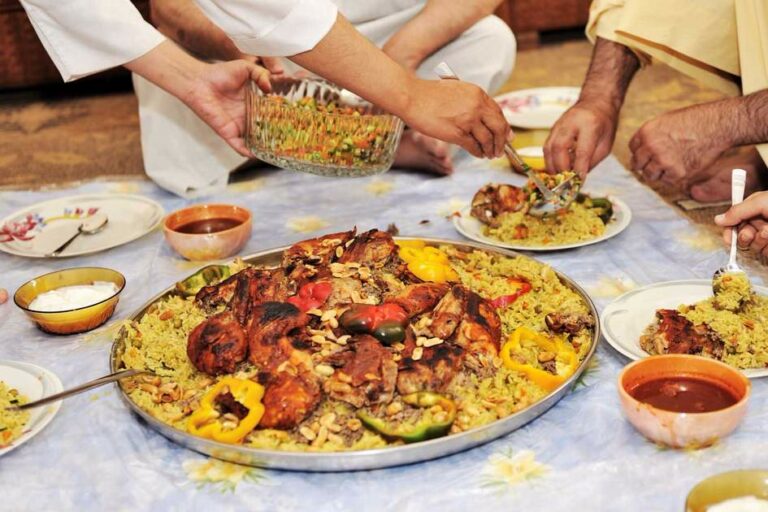Introduction: The Geography of Oman’s Coastline
Oman is located on the southeastern coast of the Arabian Peninsula, with a coastline stretching over 1,700 km along the Arabian Sea and the Gulf of Oman. The country’s coastal location has greatly influenced its cuisine, with seafood being a major component of Omani dishes. The Omani people have adapted to their coastal environment by developing unique culinary traditions that are heavily influenced by the sea.
The Influence of the Sea on Omani Cuisine
The sea has played a significant role in shaping Omani cuisine. The Omani people have been fishing in the Arabian Sea and the Gulf of Oman for centuries, and seafood has become a staple in their diet. Fish, in particular, is a popular ingredient in Omani cuisine, and it is often cooked in a variety of ways, such as grilling, frying, and steaming. Other seafood, such as shrimp, crab, and squid, are also commonly used in Omani dishes.
Apart from seafood, the sea also provides an abundant supply of spices and herbs that are used in Omani cuisine. For instance, dried limes, turmeric, cumin, and coriander are commonly used in Omani dishes, and they add a unique flavor and aroma to the food. The sea salt found along the coast also plays an important role in Omani cooking, and it is often used to season fish and other seafood.
Fish: A Staple in Omani Diets
Fish is an essential ingredient in Omani cooking, and it is often used in traditional dishes such as shuwa, a slow-cooked lamb or goat meat that is marinated in spices and wrapped in banana leaves before being cooked in an underground oven. Another popular seafood dish is machboos, a spiced rice dish that is often made with fish or shrimp. Other traditional Omani fish dishes include samak saloonah, a fish stew made with tomatoes, onions, and spices, and shuwaak, a grilled fish dish that is marinated in spices and herbs.
Spices and Herbs in Coastal Omani Cooking
Omani cuisine is known for its use of spices and herbs, many of which are found along the country’s coastline. For instance, saffron, a highly prized spice, is commonly used in Omani dishes, and it adds a distinct flavor and color to the food. Other popular spices and herbs include cinnamon, cardamom, cloves, thyme, and rosemary. These ingredients are often used in marinades, rubs, and sauces, which add flavor and aroma to the fish and other seafood.
Unique Coastal Omani Dishes and Their Origins
Omani cuisine is diverse and rich, with many unique dishes that reflect the country’s coastal heritage. One such dish is halwa, a sweet treat that is made from sugar, starch, ghee, and saffron. Another popular dish is khubz ragag, a thin, crispy bread that is often served with honey and cheese. Other traditional Omani dishes include harees, a savory porridge made with meat and wheat, and balaleet, a sweet vermicelli pudding that is often flavored with rosewater.
The Future of Omani Cuisine in a Changing Climate
As the world’s climate changes, the Omani people are faced with new challenges in maintaining their culinary traditions. Rising sea levels and warmer temperatures could affect the availability of seafood and spices, and could also impact the way that traditional Omani dishes are prepared. However, the Omani people are resourceful and adaptive, and they are likely to find new ways to incorporate their coastal heritage into their cuisine. As such, it is likely that Omani cuisine will continue to evolve and thrive in the coming years.

